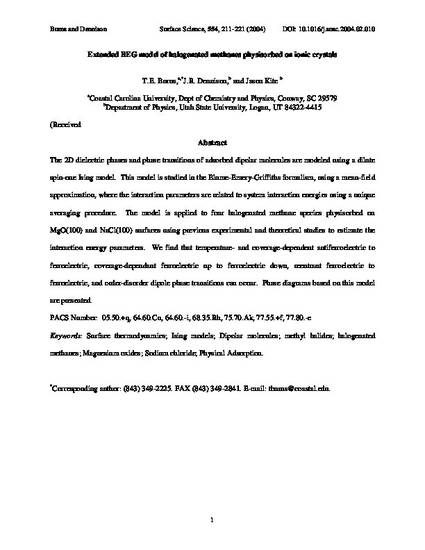
Article
Extended BEG Model of Monhalogenated Methanes Physisorbed on Ionic Crystals
Surface Science
(2004)
Abstract
The 2D dielectric phases and phase transitions of adsorbed dipolar molecules are modeled using a dilute spin-one Ising model. This model is studied in the Blume–Emery–Griffiths formalism, using a mean-field approximation, where the interaction parameters are uniquely determined from the system interaction energies using an averaging procedure. The model is applied to four monhalogenated methane species physisorbed on MgO(1 0 0) and NaCl(1 0 0) surfaces using previous experimental and theoretical studies to estimate the interaction energy parameters. We find that temperature- and coverage-dependent antiferroelectric to ferroelectric, coverage-dependent ferroelectric up to ferroelectric down, reentrant ferroelectric to ferrielectric, and order-disorder dipole phase transitions can occur. Phase diagrams based on this model are presented.
Keywords
- Surface thermodynamics (including phase transitions); Ising models; Halides; Alkanes; Magnesium oxides; Alkali halides; Physical adsorption
Disciplines
Publication Date
April 1, 2004
Publisher Statement
http://www.sciencedirect.com/science/article/pii/S0039602804001153
Published by Elsevier in Surface Science. Publisher PDF is available for download through the link above.
Citation Information
T.E. Burns, JR Dennison and Jason Kite, “Extended BEG Model of Monhalogenated Methanes Physisorbed on Ionic
Crystals,” Surface Science, 554, 211-221 (2004).
